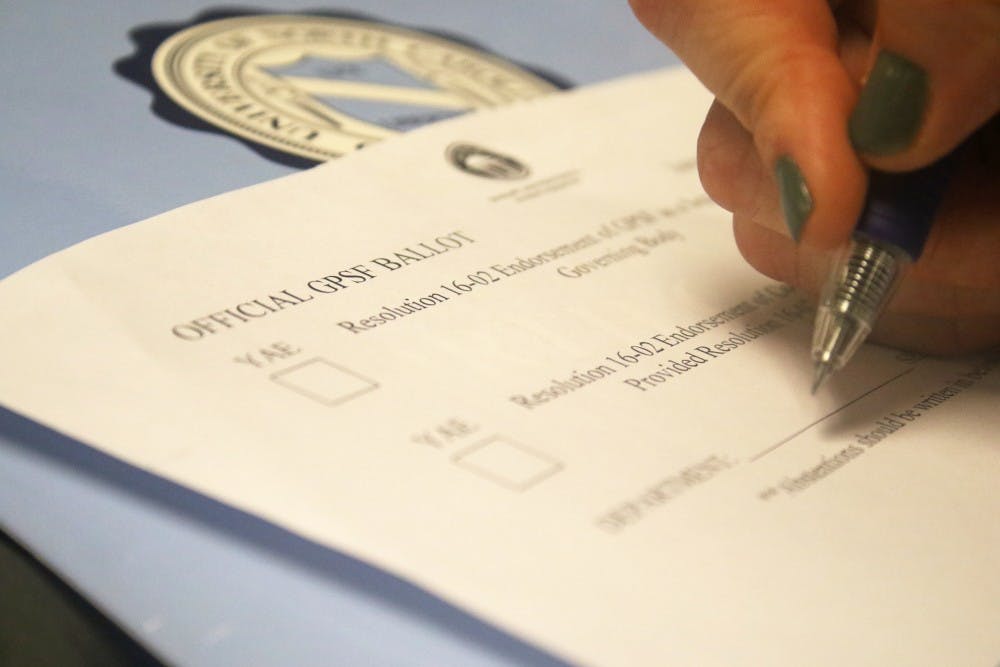In spring campus elections, the student body voted on referenda to decide the future of graduate students’ governance — but it resulted in no change.
“The lawsuit has everything to do with an interpretation, and we’re not criticizing the Board of Elections,” Russell said. “It’s a fundamental disagreement on how the law was written and what the law says.”
The referenda up for voting were Better Together, which would have kept the government together while revising the student constitution, and Two for Two, which would have separated GPSF from undergraduate student government. Students could also vote for no change.
“There were two (referenda) that would change the constitution in conflict with each other, so Congress passed a bill that allowed us to pursue a runoff-style voting for the two ballot measures,” said Grayson Berger, chairperson of the Board of Elections.
Students ranked the three options in order of preference. According to the bill, if no option reached a required threshold after first-preference votes were counted, the option with the fewest first-preference votes had to be eliminated and the vote recounted.
After the first round of voting, Two for Two had 50.2 percent of the votes, Better Together had 33.66 percent and the option for no change had 16.14 percent. The Board of Elections then eliminated Better Together and split its votes in a runoff. Two for Two then had 64 percent, and no change had 36 percent.
Because the Two for Two referendum did not reach its required two-thirds majority, it did not pass.
GPSF Chief of Staff Marissa Cann said the Executive Board did not understand why the Board of Elections had not dropped no change, which had the fewest votes. But Berger interpreted the bill differently.




